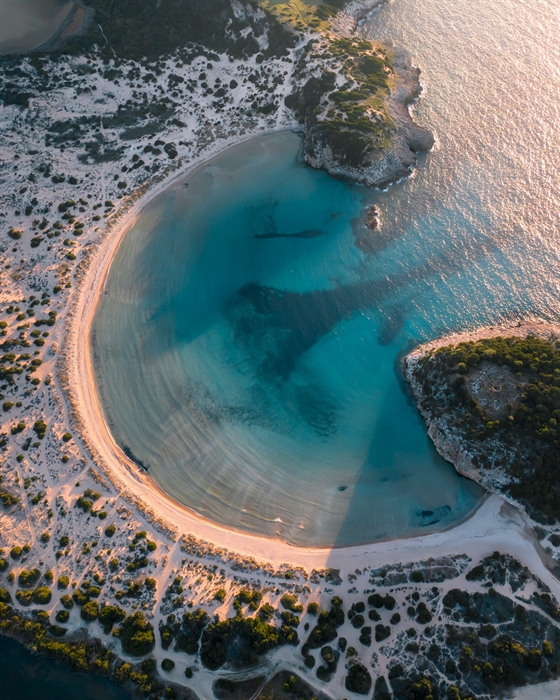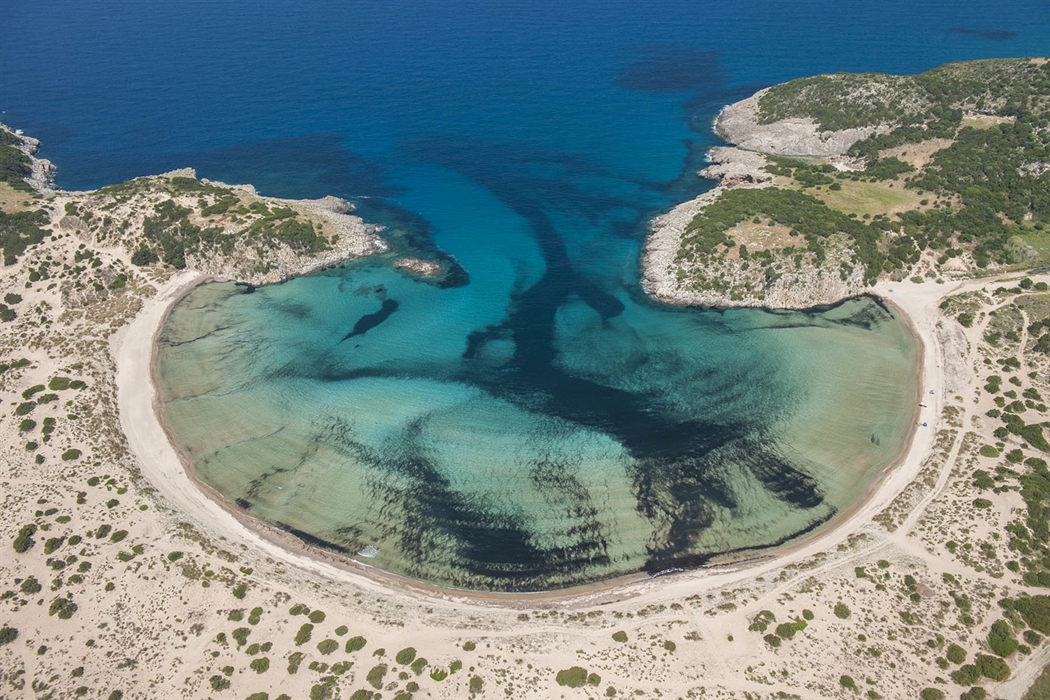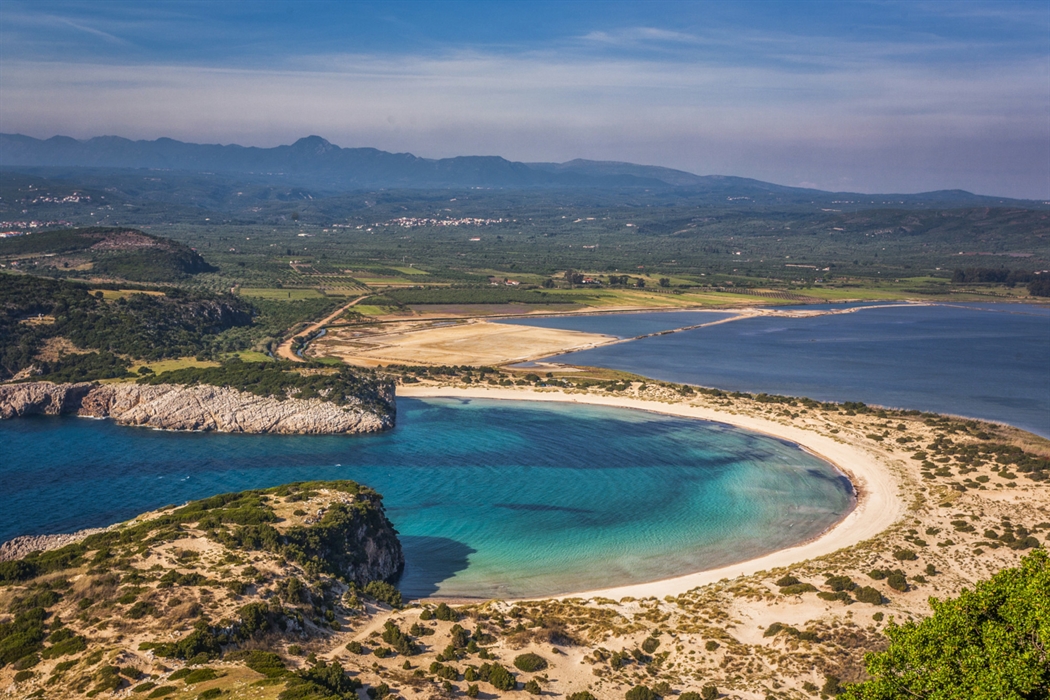Voidoikilia
People just can’t stop praising this famous beach online - it’s "Omega-shaped", it looks as if it has been "drawn with a compass", it’s "exotic", "one of the most beautiful beaches in Greece and the Mediterranean", "one of the most Instagrammable beaches". So why not take a trip to this outstanding beach and see for yourself?
People just can’t stop praising this famous beach online - it’s "Omega-shaped", it looks as if it has been "drawn with a compass", it’s "exotic", "one of the most beautiful beaches in Greece and the Mediterranean", "one of the most Instagrammable beaches". But once you're there it's best to forget all of the hype, relax and enjoy this unique site of the Peloponnese. Gaze at the sea with its endless shades of turquoise, green and blue. Sink your feet into the white sand. Go for a walk and collect some shells. Just allow yourself to admire the landscape and the Ionian Sea stretching out in front of you. And if you can, come in early summer or late autumn to avoid the crowds as Voidoikilia has been discovered by tourists in recent years.
Voidokilia (roughly translated as Cow’s Belly) is a strange name for a beautiful beach! One story tells us the beach got its name from an ancient inscription calling it Voubota (Voidokilia). Another theory is that the name refers to Homer's Vufrada (“where the oxen live”).
In terms of "design", the beach does indeed look as if it has been drawn by a giant hand using a compass. It’s almost circular, covering 300 degrees, with the remaining 60° being where the Ionian Sea flows into the shallow bay. There are two huge symmetrical rocks, one on either side of the opening, which turn the circle into an Omega and which were formed by the same geological processes. And as with almost everywhere in Greece, history is not far away –the Old Navarino Fortress with its half-demolished walls dominates the headland above the bay.
But Voidokilia is more than just a beautiful beach. The Bay of Voidokilia is an ecosystem that is constantly being formed and reformed by the interaction between the wind and the sea, and its sandy strip of beach is covered by tall European Marram Grass (Ammophila arenaria). The bay is part of the single complex of biotopes formed by the Gialova Lagoon, the Navarino Bay and the island Sfaktiria. This complex is particularly important for Greece and has also been included in the European Natura 2000 Network. Gialova and Voidokilia has also been designated an archaeological site.
To the north of the beach there you can visit the vaulted tomb of Thrasymedes –a great spot for taking photos.
If you are looking for some peace and quiet, head for the tiny beach of Glossa to the north. It’s a lovely sandy beach surrounded by rocks and vegetation.
See information about the tomb of Thrasymedes.
Did you know that
Voidokilia is about 50 kilometers from Kalamata.
It is not an organised tourist beach, so you will have to take anything you need with you. In the summers it is full of people and it’s a good idea to leave your vehicle and go on foot.
Location
Find the destination on the interactive map below.
Categories
Weather
Σχετικό περιεχόμενο χρηστών (UGC)
Ενημερωθείτε για ενδιαφέροντα θέματα γύρω από τον προορισμό μέσα από το περιεχόμενο των χρηστών μας
Discover 7 hidden gems of the Peloponnese
Many of you may have already visited some of the most renowned attractions…
TOP 10 archaeological museums in the Peloponnese
Olympia, Mycenae, Epidaurus, Diros Cave, Ancient Corinth, Messene and…
TOP 10 Castles in the Peloponnese
Castles galore! Mystras, Monemvasia, Palamidi, Methoni, Koroni,…
Newsletters
- About us
- FAQ's
- Map
- Tourism information centers
- Disclaimer
- Sitemap
- Our brand
- Media roum
- Adding your bussiness
- Corporate
- MICE

Peloponnese. Greece beyond the obvious





Design and creation from Cosmote
Marinas and Moorings
Diving centers
Get inspired
- Media gallery
- Blog
- The Peloponnese in the media
- Your feedback
- Users' general content
- Users' local products
- Users' events content
- Ask a local
More
- Accommodation
- Travel agencies
- Restaurants
- Services
- Destinations Map
- Weather
- Public transport
- Events
- Frequently asked questions
- Useful phones
- B2B
- Destination Data
- Contact




